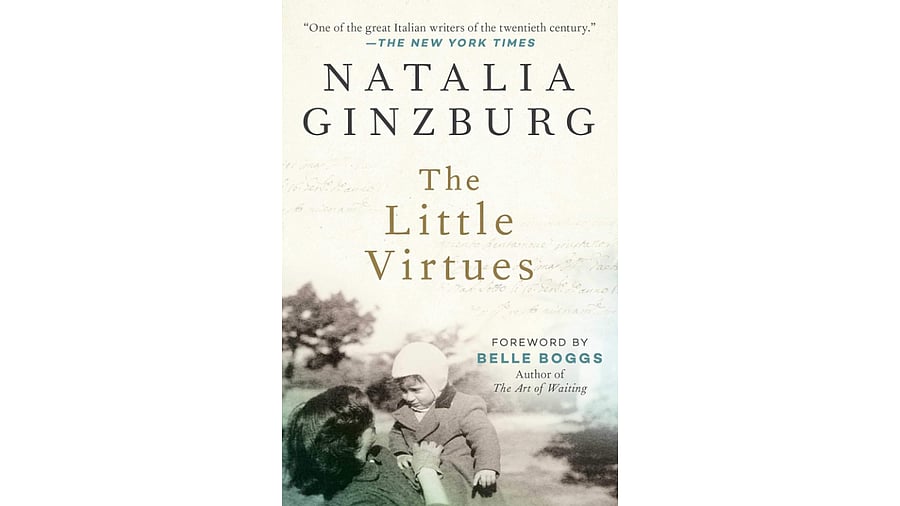
The Little Virtues
The subjects of Natalia Ginzburg’s 11 short essays, collected in the volume The Little Virtues and published in the original Italian in 1962, are so ordinary at first glance that you wonder if there’s really so much to say about a worn-out pair of shoes or bad English cuisine. Turns out, Ginzburg, whose reputation as one of the finest prose stylists in modern Italian literature has only grown over time, could mine even the most mundane topic for revelatory personal history, the pain in the loss of a spouse or a friend, the anxiety of bringing up children in a world that is violent and increasingly materialistic, and more.
The first essay in this collection (translated into English by Dick Davis), Winter in Abruzzi, starts off with Ginzburg describing this part of rural southern Italy in stark terms: “There are only two seasons in the Abruzzi: summer and winter. The spring is snowy and windy like the winter, and the autumn is hot and clear like the summer. Summer starts in June and ends in November. The long days of sunshine on the low, parched hills, the yellow dust in the streets and the babies’ dysentery come to an end, and winter begins.”
Ginzburg signals early on that this piece is not going to be some cosy, bucolic escape to the countryside: she builds up from the climate and its harshness to the bodily ills afflicting the most vulnerable residents of this region. This essay is also one of two in the book that touches on devastating personal tragedy — the reason Ginzburg and her family are in Abruzzi is because the Fascist regime has exiled them there.
Her husband would eventually die in prison, in a solitary cell, a fact she relates in the final paragraph, preceding it with the reflection: “There is a kind of uniform monotony in the fate of man. Our lives unfold according to ancient, unchangeable laws, according to an invariable and ancient rhythm. Our dreams are never realised and as soon as we see them betrayed we realise that the intensest joys of our life have nothing to do with reality. No sooner do we see them betrayed than we are consumed with regret for the time when they glowed within us. And in this succession of hopes and regrets our life slips by.”
Even though the pieces in The Little Virtues are weighted by the heaviness of loss, of the late-in-life realisation we all come to that we could have done more, there’s a sharp sense of humour here that lightens the melancholy on occasion. In England: Eulogy and Lament, Ginzburg writes critically of the English aesthetic: “The English have no imagination. They all dress in the same way. The women you see in the streets all have the same beige or transparent plastic raincoats which look like shower curtains or tablecloths in restaurants.” She doesn’t even spare the Bohemians of Chelsea who think they are unconventional in their attire but fail to realise “…that the streets are full of thousands of young people exactly identical to themselves, with the same hairstyle, the same expression of naïve defiance, the same shoes.”
When Ginzburg turns her penetrating gaze on her own choice of career in the essay The Vocation, she’s at her most vulnerable and self-critical: “When I write something I usually think it is very important and that I am a very fine writer. I think happens to everyone. But there is a corner of my mind in which I know very well what I am, which is a small, very small writer.”
Reading these essays and her larger body of work and seeing her enduring influence on contemporary writers ranging from Zadie Smith to Sally Rooney and Lisa Taddeo, it’s quite clear that Ginzburg could never have been a “small writer”. To take the most prosaic of objects, examine them with a poet’s grace, and make observations that are both specific and universal takes skill and imagination that only the truly great writers have.
The author is a writer and communications professional. When she’s not reading, writing or watching cat videos, she can be found on Instagram @saudha_k where she posts about reading, writing, and cats.
That One Book is a fortnightly column that does exactly what it says — it takes up one great classic and tells you why it is (still) great.